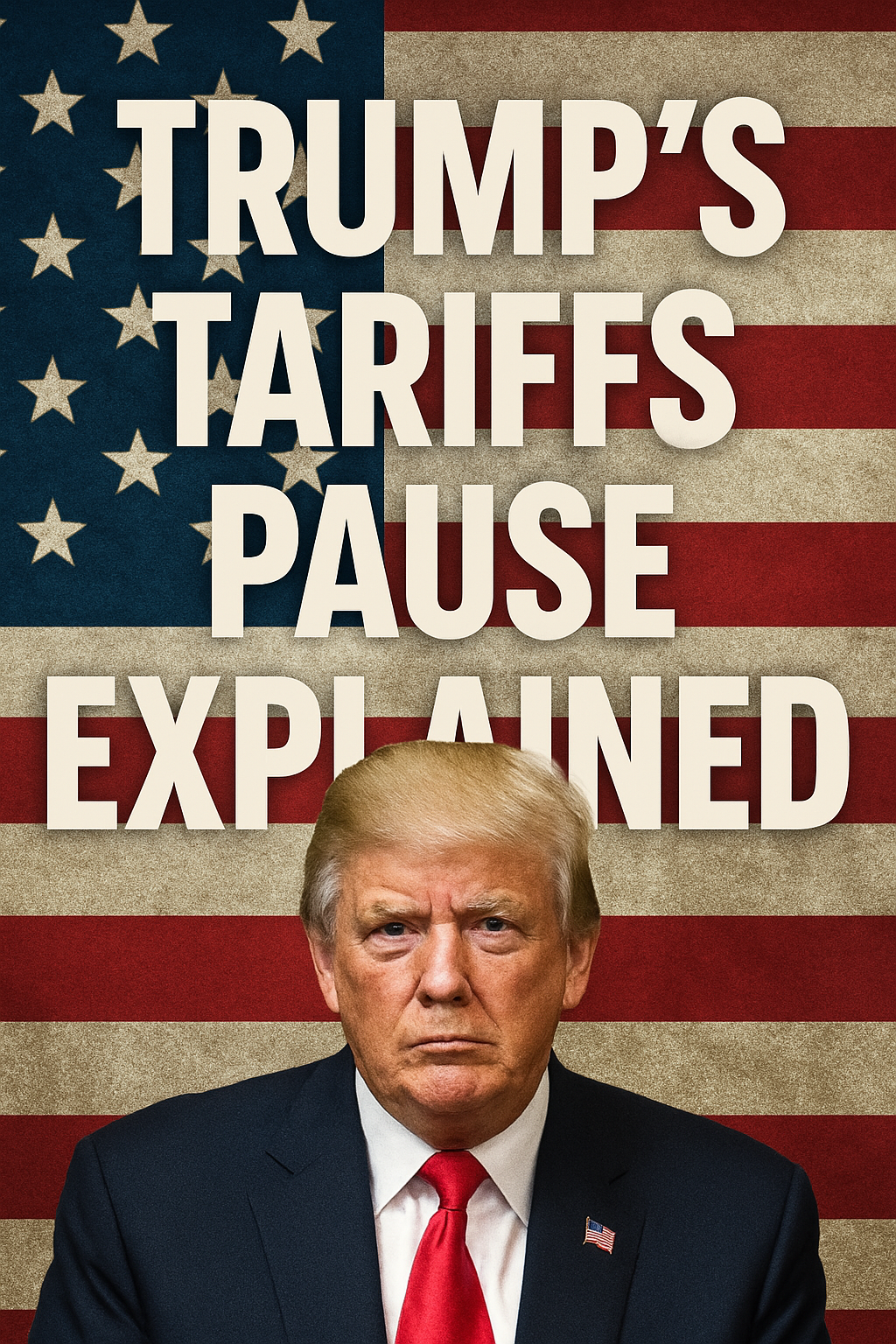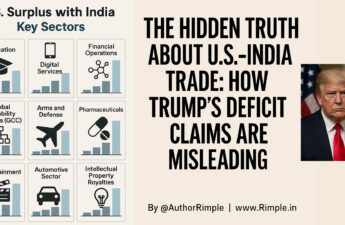Let’s break this down step-by-step in simple language, keeping it clear and engaging for an economics layman. The decision by Trump to pause tariffs for 90 days (except for China) in April 2025 was influenced by a mix of economic pressures, with the bond market playing a big role. Here’s how it unfolded and why the selling of U.S. Treasury bonds mattered:
Step 1: Trump’s Tariff Plan
- Trump announced hefty tariffs on imports from many countries, aiming to protect U.S. industries and fix trade imbalances. These were called “reciprocal tariffs,” meaning they matched what other countries charged the U.S.
- For most countries, tariffs were set to hit 10%–50%, while China faced a massive 104% (later raised to 125%).
- The goal was to bring manufacturing back to the U.S., raise government revenue, and pressure other countries to negotiate better trade deals.
Step 2: Markets Freak Out
As soon as the tariffs kicked in, global financial markets went wild:
- Stock markets crashed: Investors feared tariffs would raise prices, hurt companies, and slow global trade. The S&P 500 and other indexes lost trillions in value over a few days.
- Bond market chaos: U.S. Treasury bonds, normally a “safe haven” during uncertainty, started selling off. This was unusual and alarming.
Why the bond sell-off? Investors worried tariffs would:
- Cause inflation (higher import costs = higher prices).
- Slow economic growth (less trade = weaker economies).
- Increase U.S. debt (tariffs might not cover lost revenue if trade shrank).
Step 3: Why U.S. Treasury Bonds Matter
- U.S. Treasury bonds are like IOUs the government issues to borrow money. They’re considered super safe because the U.S. always pays its debts.
- When people sell these bonds, their prices drop, and their yields (interest rates) rise. Higher yields mean the U.S. government has to pay more to borrow money.
- Normally, during a crisis, investors buy Treasuries for safety, driving yields down. But this time, yields on 10-year Treasuries spiked to around 4.5%, suggesting investors were losing confidence in U.S. assets.
Step 4: The Bond Sell-Off Scare
Had the selling “started”? Yes, it had. Reports suggest investors, including some foreign governments (like Japan or China), were dumping U.S. bonds. This wasn’t a full-blown crisis yet, but it was a warning sign.
Why was this a big deal?
- Higher borrowing costs: The U.S. runs a big deficit (spending more than it earns). If yields stay high, it costs more to finance that debt. In 2024, the U.S. spent over $1 trillion just on debt interest!
- Global trust at risk: If foreign investors (who hold about 30% of U.S. debt) keep selling, it could signal distrust in the U.S. economy, making borrowing even harder.
- Economic ripple effects: Higher yields raise mortgage rates, car loans, and business borrowing costs, slowing the economy further.
Step 5: Why Trump Paused the Tariffs
Trump initially brushed off the stock market drop, but the bond market turmoil got his attention. He reportedly said, “The bond market is tricky… people were getting a little queasy.”
Here’s what likely pushed him to act:
- Bond market pressure: The sell-off signaled investors were spooked. If it continued, it could’ve made U.S. borrowing way more expensive, threatening Trump’s economic plans (like tax cuts or infrastructure).
- Advisor warnings: Treasury Secretary Scott Bessent and others warned Trump the bond market chaos could spiral into a bigger crisis, like a recession.
- Trade talks opportunity: Over 75 countries reached out to negotiate trade deals. Trump saw a chance to pause tariffs, lower them to 10% (except for China), and use the 90 days to strike “bespoke” agreements.
- China exception: Trump hiked China’s tariffs to 125% because they retaliated with 84% tariffs on U.S. goods. He wanted to isolate China while rewarding non-retaliating countries.
Step 6: What Happened After the Pause
The pause was announced on April 9, 2025, and markets reacted fast:
- Stocks soared: The S&P 500 jumped 9.5%, its best day since 2008. The Nasdaq climbed 12%.
- Bond yields eased: The 10-year Treasury yield dropped from 4.5% to about 4.4%, showing some relief in the bond market.
The pause didn’t solve everything:
- A 10% baseline tariff stayed in place for most countries.
- Uncertainty lingered about what would happen after 90 days.
- Economists still warned of recession risks, especially with China’s tariffs escalating.
Why the Bond Sell-Off Was a “Great Loss” Risk
If the bond sell-off had worsened:
- The U.S. would’ve faced skyrocketing borrowing costs, squeezing the budget for things like Social Security, defense, or tax cuts.
- A loss of confidence in Treasuries could weaken the dollar’s global status, as many countries hold U.S. debt as reserves.
- It could’ve triggered a broader financial crisis, like when the UK’s bond market tanked in 2022 after bad policy moves.
By pausing tariffs, Trump avoided pushing the bond market to a breaking point, at least for now.
For the Economic Nerd: Key Takeaways
- Bond vigilantes in action: Investors selling bonds were like a warning shot, reminding Trump that markets can punish bad policies.
- Tariffs are a gamble: They might bring short-term revenue but risk long-term chaos if they disrupt trade and confidence.
- U.S. debt vulnerability: With $33 trillion in debt (and counting), the U.S. can’t afford to scare off bond buyers.
- Trade war nuance: Trump’s pause shows he’s willing to pivot when pressure mounts, but his China focus keeps the trade war alive.
In short, Trump paused tariffs because the bond market was flashing red, signaling a potential disaster for U.S. borrowing and economic stability. The sell-off had started, and while it wasn’t catastrophic yet, it was enough to make him hit the brakes and buy time to negotiate. Think of it like swerving to avoid a crash—you’re not safe yet, but you’ve dodged the worst for now.





